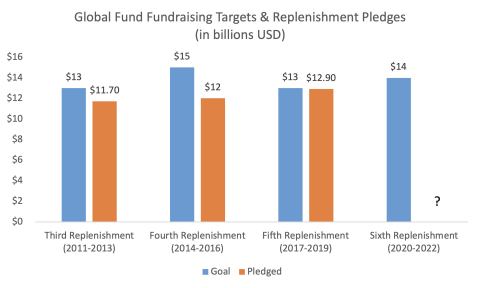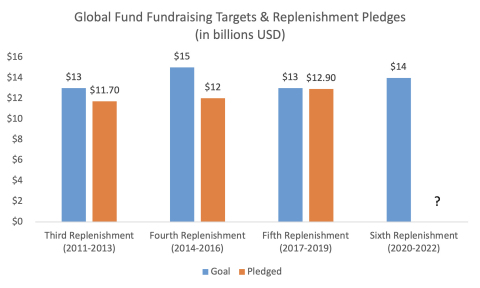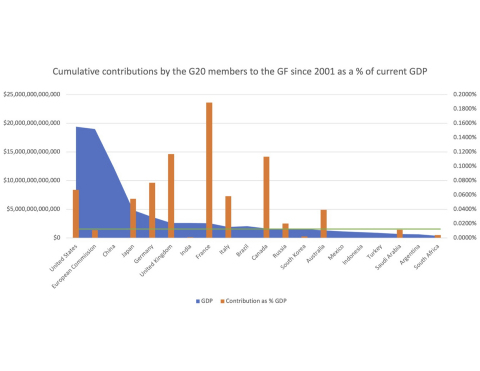WASHINGTON--(BUSINESS WIRE)--In an era of stagnant funding for global public health and diminishing cooperation among countries, now is a critical time to ensure the Global Fund to Fight AIDS, Tuberculosis and Malaria (GFATM) is able to meet and exceed its fundraising goal of $14 billion1 for the next three years.
With a projected gap of nearly $3 billion2 per year in overall funding for the global response to the three epidemics, sustaining gains and maintaining progress will not be possible unless all countries commit their fair share of resources to the fight.
Since the Global Fund’s inception in 2002, it has saved over 27 million lives. There are over 17.5 million people receiving lifesaving antiretroviral therapy for HIV, and in 2017 alone, the Fund treated 5 million people for tuberculosis and distributed nearly 200 million mosquito nets.
Its proven multilateral model effectively balances donor input with the greatest need and ensures almost $4 billion per year reaches programs run by local experts in low- and middle-income countries.
But the effects of Global Fund support extend well beyond treatment numbers. Added benefits include lower healthcare costs for governments and individuals, decreased disease burden worldwide, and stronger local, regional and global economies.
“Despite all the positive results the Global Fund produces, it still faces a crisis. Funding has remained flat for several years. The projected need for $14 billion in pledges from donors for the Sixth Replenishment is only a bare minimum. With additional resources, the Fund can deliver even better results and save additional millions of lives,” said Michael Weinstein, AHF President. “AHF urges Global Fund partners meeting at the Replenishment Preparatory Meeting this February in India to ensure they strive for more ambitious commitments from donors to provide the best chance toward ending the epidemics by 2030.”
Even though many nations contribute their fair share, some wealthy countries do not. China3, for example, is a G20 member with the world’s second largest economy, yet it has never significantly contributed to the Fund. China and leading petroleum-producing countries can and should help make up the $3 billion deficit, as their contributions would guarantee the Global Fund its best chance to rid the world of three diseases that still kill over 3 million people annually.
As the Global Fund gears up for its Sixth Replenishment Preparatory Meeting in India this February and its Pledging Conference in France in October, AIDS Healthcare Foundation (AHF) calls on world leaders to remember their words at the 2018 G20 summit in Argentina where they announced, “We are committed to ending HIV/AIDS, tuberculosis and malaria, and look forward to a successful [Sixth] replenishment of the Global Fund in 2019.”
“Infectious diseases know no borders, have no concern for economic status and are a burden on the entire world—not just on developing nations. The time has come to build on the Global Fund’s past performance and ensure it is fully funded to accomplish its mission,” said Dr. Jorge Saavedra, Executive Director for the AHF Institute for Global Health at the University of Miami. “World leaders have said that they are ready to commit—AHF now urges them to turn those words into action and Fund the Fund!”
AIDS Healthcare Foundation (AHF), the largest global AIDS organization, currently provides medical care and/or services to over one million clients in 43 countries worldwide in the US, Africa, Latin America/Caribbean, the Asia/Pacific Region and Eastern Europe. To learn more about AHF, please visit our website: www.aidshealth.org, find us on Facebook: www.facebook.com/aidshealth and follow us on Twitter: @aidshealthcare and Instagram: @aidshealthcare
1 https://www.theglobalfund.org/media/8174/publication_sixthreplenishmentinvestmentcase_summary_en.pdf
2
Based on AHF’s calculations derived from publicly available data from
the Global Fund and PEPFAR.
3 https://www.theglobalfund.org/en/financials/





